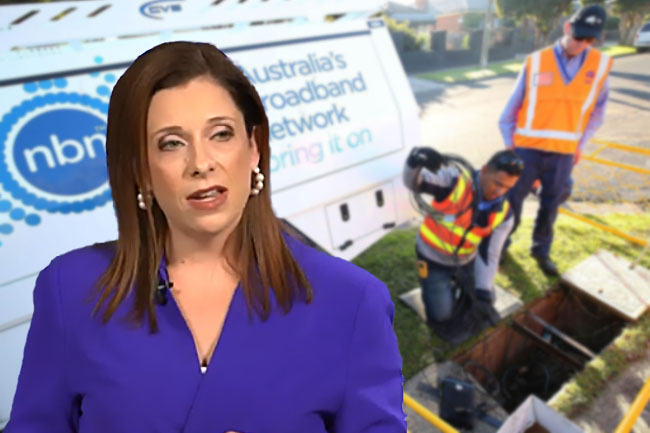The Labor Government is considering legislation to expand the 000 emergency service Australia-wide, using technology like direct-to-device (D2D) satellite communications, writes Paul Budde.
IN A PREVIOUS Independent Australia article, I discussed the emergence of direct-to-device (D2D) satellite communications and its transformative potential for Australia.
With only around 30% of our landmass currently covered by traditional mobile networks, the opportunity to dramatically expand coverage using satellite technology is nothing short of revolutionary.
The Australian Government is now considering legislation that would mandate universal access to the 000 emergency service across the entire country. This would include areas far beyond current mobile coverage. Such a nationwide obligation will only be possible with new technologies like satellite-based D2D services and we are now seeing that technology move from theory to practice.
Lessons from the Los Angeles wildfires
A powerful recent example comes from the United States. During the 2025 wildfires in Southern California, mobile phone users unknowingly benefited from a new capability.
SpaceX's Starlink, in partnership with T-Mobile IS Inc., had activated satellite support for standard 4G mobile phones in affected areas where towers were down. The result? Over 96,000 text messages were sent by more than 198,000 users via satellite connectivity — this, without using any special devices or apps.
This real-world proof point gave many observers confidence that the technology works in emergencies and that its utility will only grow with further deployment.
Telstra’s vision: Satellites and 6G as national infrastructure
Telstra, which has already begun working with Starlink to trial satellite-based messaging services, has now publicly framed 6G as critical national infrastructure.
CommsDay reported on a submission from Telstra outlining its 6G priorities. The company called for a resilient, investment-ready specification that avoids over-engineering while delivering measurable improvements over 5G. Crucially, it highlighted the importance of non-terrestrial networks (NTNs ) – including low Earth orbit (LEO) satellite systems – as essential to Australia’s next-generation mobile strategy.
Telstra specifically referenced the need for “always-on emergency connectivity” and “coverage over the entire Australian continent”. It proposed tight integration between terrestrial (TN) and non-terrestrial networks from the outset of 6G development, with the terrestrial network maintaining control. This includes the expectation that 6G should provide “a temporary disaster relief solution from day one”.
Security also featured heavily in Telstra’s submission. It advocated for an “end-to-end secure design based on zero-trust principles,” ensuring that 6G is dependably secure as a foundational requirement, not an afterthought.
It is encouraging to see a major telco linking these emerging satellite capabilities directly to the evolution of wireless standards and policy.
New Zealand's early adoption
New Zealand is moving rapidly in this space. One NZ (formerly Vodafone New Zealand) has launched its Satellite TXT service in partnership with Starlink, with plans to expand it across more devices through 2025.
Meanwhile, rival provider 2degrees has signed an agreement with AST SpaceMobile to bring satellite connectivity for voice and data directly to standard smartphones, with full services expected to begin in 2025 or 2026.
As discussed in the earlier article on this topic, coverage challenges remain. Trials in both the United States and New Zealand revealed that some areas were unable to receive a satellite signal, and in some cases, messaging was delayed. It is expected that, over time, these issues will be resolved through improved satellite coverage and continued fine-tuning of the technology.
Vodafone Australia enters the game
Here in Australia, TPG Telecom – owner of the Vodafone brand – has announced a partnership with Lynk Global. This will allow Vodafone customers to send and receive messages via satellite in areas without mobile tower coverage. It's a significant development for remote communities and for those travelling outside populated areas.
Who are AST and Lynk?
AST SpaceMobile is a U.S.-based satellite company founded by Abel Avellan. Its SpaceMobile constellation is designed to connect ordinary mobile phones to satellites, allowing for full broadband communication even in remote locations. AST has strong backing from major global players, including Vodafone, AT&T, Verizon, Google and Rakuten.
Lynk Global is another U.S.-based company, co-founded by Charles Miller, Margo Deckard and Tyghe Speidel. Often described as providing a 'cell-tower-in-space', Lynk’s satellites broadcast mobile spectrum that existing handsets can connect to without modification. The company has already tested services in countries such as South Africa and Turkey.
A company that just announced its entry into the Australian market is Skylo Technologies, based in California. The company announced an expansion of its network that will cover the entirety of the U.S. as well as additional continents with coverage in Brazil, Australia and New Zealand. This geographic expansion is delivered in partnership with Viasat.
The road ahead
By 2026, Australia is expected to benefit from multiple LEO satellite providers offering mobile services — Starlink, Lynk, AST and Amazon’s Project Kuiper among them. Amazon plans to begin trials in Australia in late 2025, with commercial services commencing soon after.
As Telstra’s 6G submission rightly points out, the key will be tight integration between terrestrial and satellite networks, seamless interoperability, and dependably secure systems built for disaster resilience from the outset. The new generation of connectivity must be robust, simple and widely available.
We are on the brink of a new era in mobile communications — one in which geography will no longer determine access to basic connectivity. Satellite D2D services, integrated into broader 6G strategies, can be the key to universal coverage. If developed properly, they will ensure that no Australian is left without access to essential communication, including during emergencies.
That’s a future worth striving for.
Paul Budde is an IA columnist and managing director of independent telecommunications research and consultancy Paul Budde Consulting. You can follow Paul on Twitter/X @PaulBudde.
 This work is licensed under a Creative Commons Attribution-NonCommercial-NoDerivs 3.0 Australia License
This work is licensed under a Creative Commons Attribution-NonCommercial-NoDerivs 3.0 Australia License
Support independent journalism Subscribe to IA.

Related Articles
- Big news revealed for Australia's telco industry
- Australian households and the affordability of telecommunications
- Overcoming barriers to connectivity in remote regions
- Big call from digital development giants for global guidance
- Collaboration between telco giants would be a huge boon for industry














